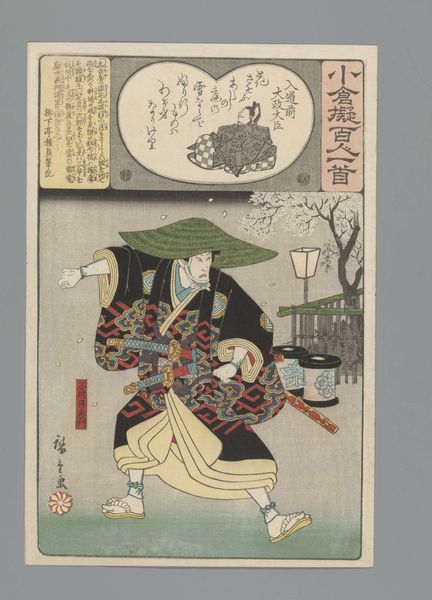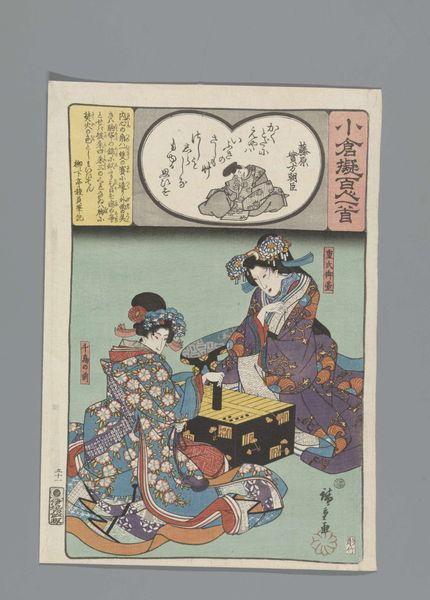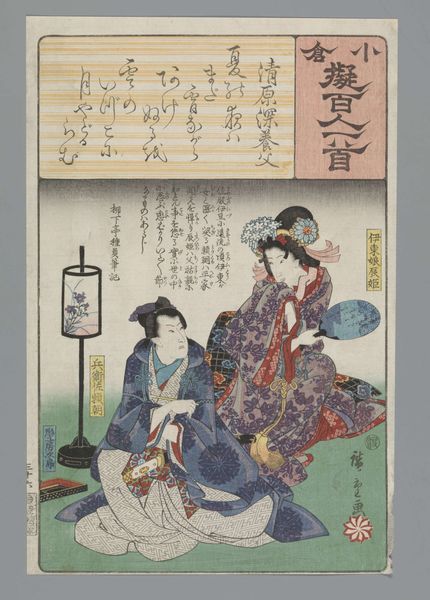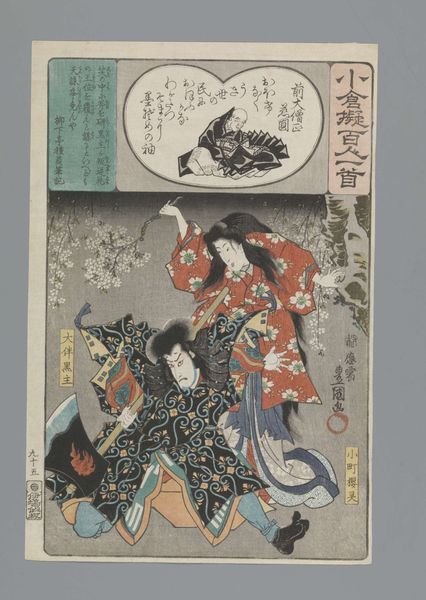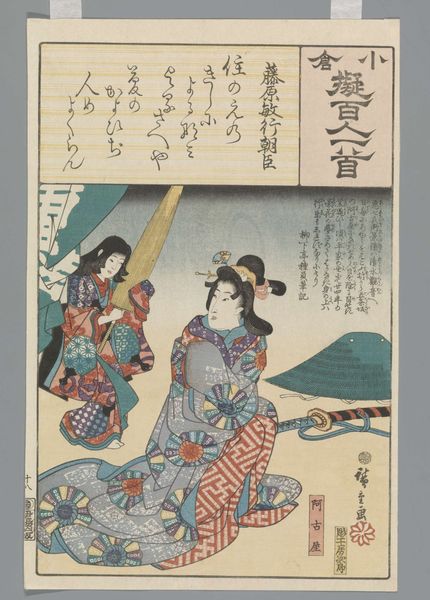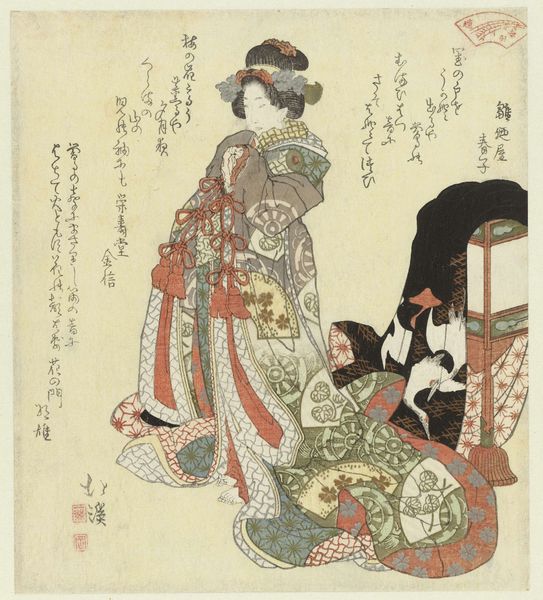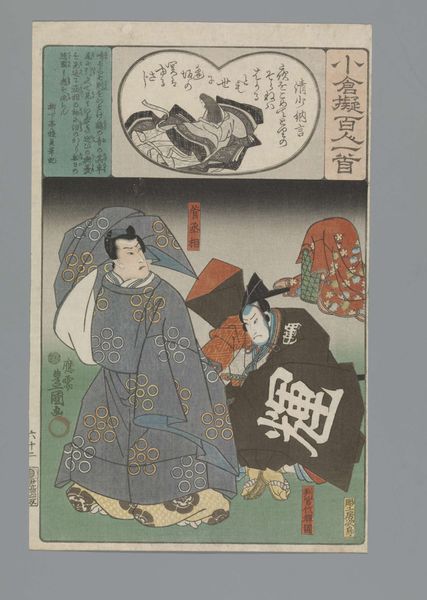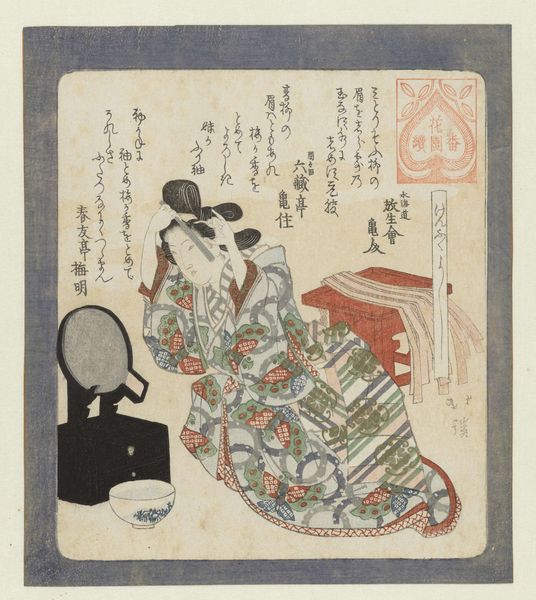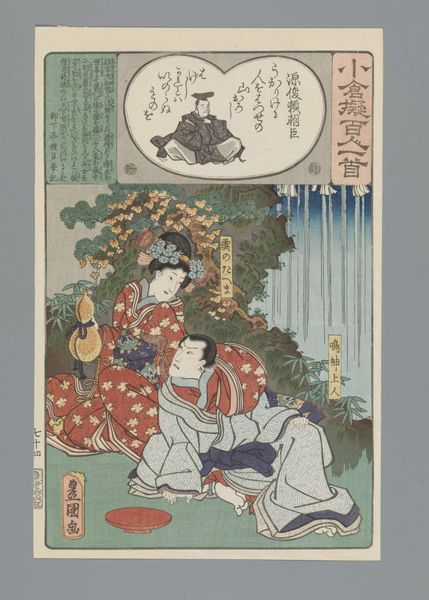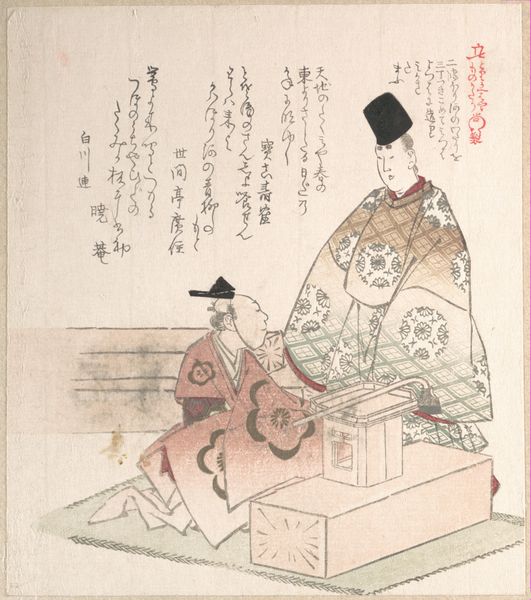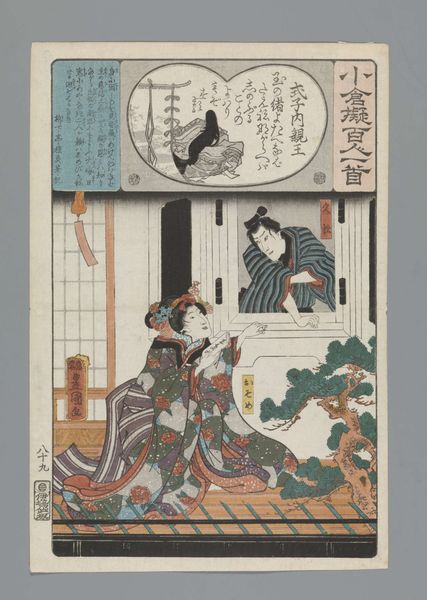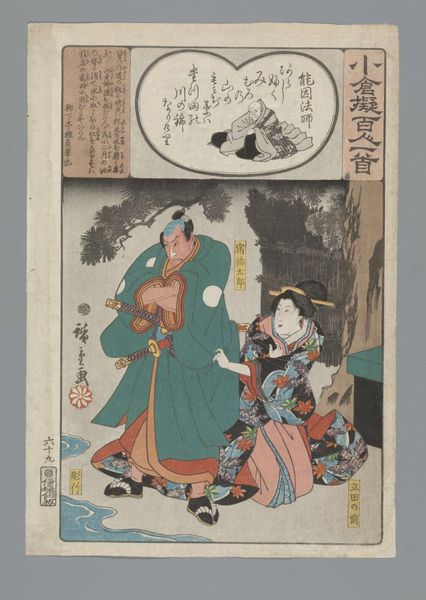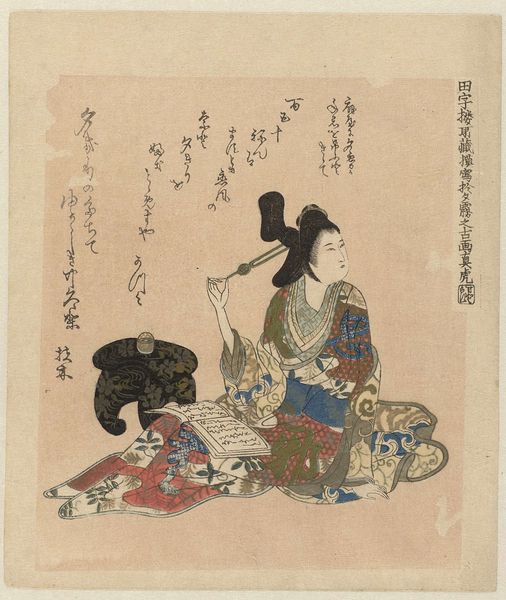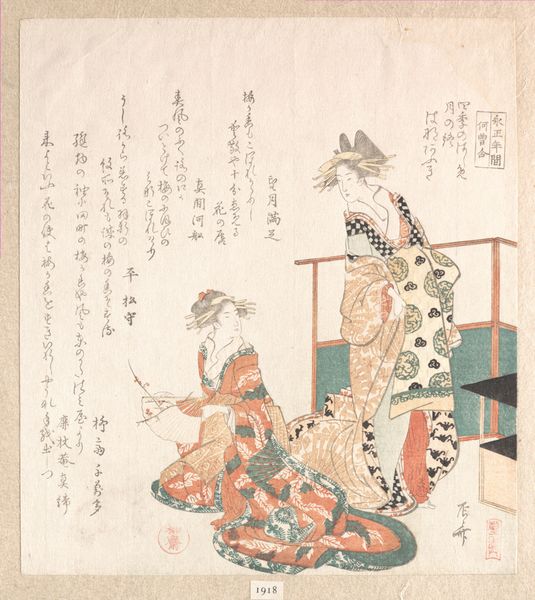
print, woodblock-print
#
portrait
# print
#
asian-art
#
traditional media
#
landscape
#
ukiyo-e
#
figuration
#
woodblock-print
#
orientalism
#
genre-painting
Dimensions: height mm, width mm
Copyright: Rijks Museum: Open Domain
Curator: Here we have Utagawa Hiroshige's "Ogura Imitation of the One Hundred Poems," created between 1847 and 1850. It's currently held in the collection of the Rijksmuseum. Editor: It’s a complex print. The color palette is striking, with its combination of purple, teal, and crimson shades. But what truly catches my attention is how Hiroshige arranges the visual planes, with each adding a narrative layer. Curator: The print showcases the meticulous technique inherent in Ukiyo-e. Note how the blocks create crisp lines, especially in the textile patterns on the figure’s kimono and the rendering of her coiffure. The semiotic weight of this is clear: attention to detail equates social prestige and artistic mastery. Editor: Precisely. The texture suggests labor, from the initial carving to the final printing process. Look at how the details would require painstaking efforts from craftsmen dedicated to the art. It speaks volumes about art production as a collective endeavor. The very existence of "high art" like this depends on a network of skill and production, challenging ideas of singular artistic genius. Curator: One cannot overlook the compositional aspect as a whole. Consider the integration of text and image. It evokes a layered sense, providing insight into a specific time period and its aesthetic values. The figure is an echo of older traditions mediated by Hiroshige's aesthetic. Editor: Right, and from a cultural standpoint, this represents how identities were crafted and portrayed in mass consumption—the commercial realities of the print trade influenced both the artist and the portrayal of his subject. The very idea of orientalism is a consequence. Curator: Viewing this from a formal perspective underscores its innovative nature, in both line and execution. I also find this to be indicative of Hiroshige’s larger stylistic project, placing himself at a pivotal point within the history of Japanese art. Editor: This artwork's ability to spark multiple layers of interrogation only amplifies its legacy. Curator: Yes, the interdisciplinary implications of the work resonate across both its historical context and contemporary assessment.
Comments
No comments
Be the first to comment and join the conversation on the ultimate creative platform.
